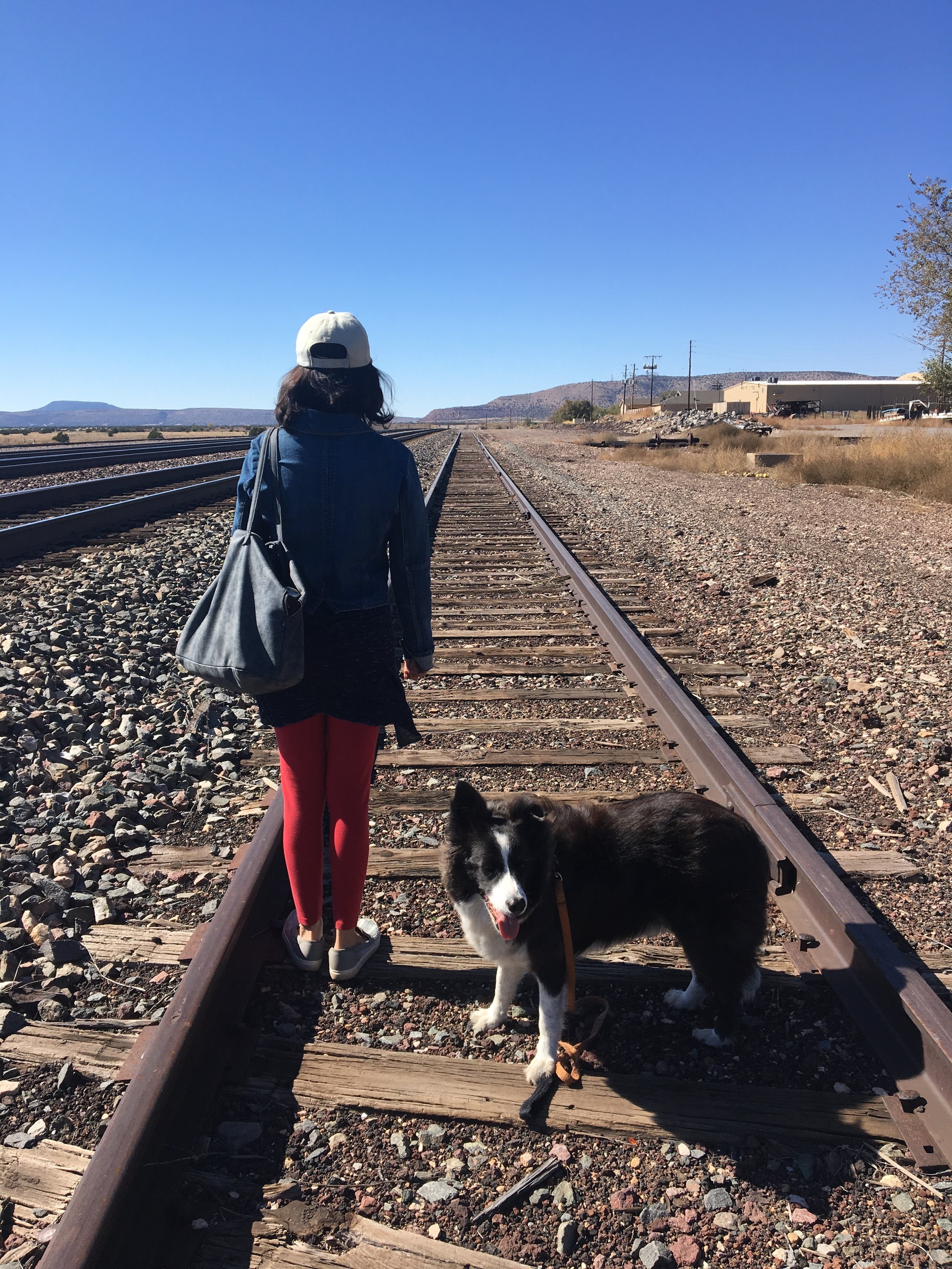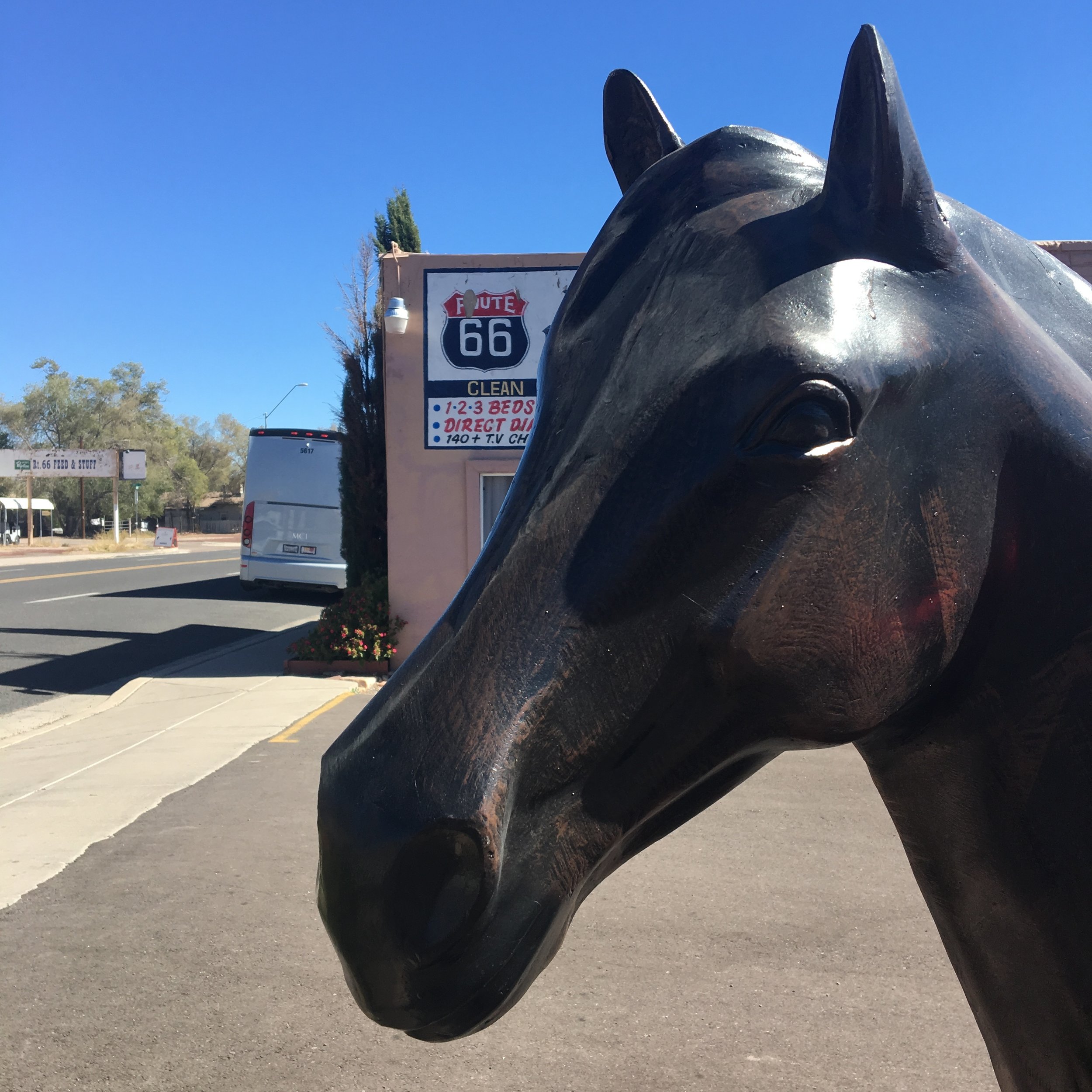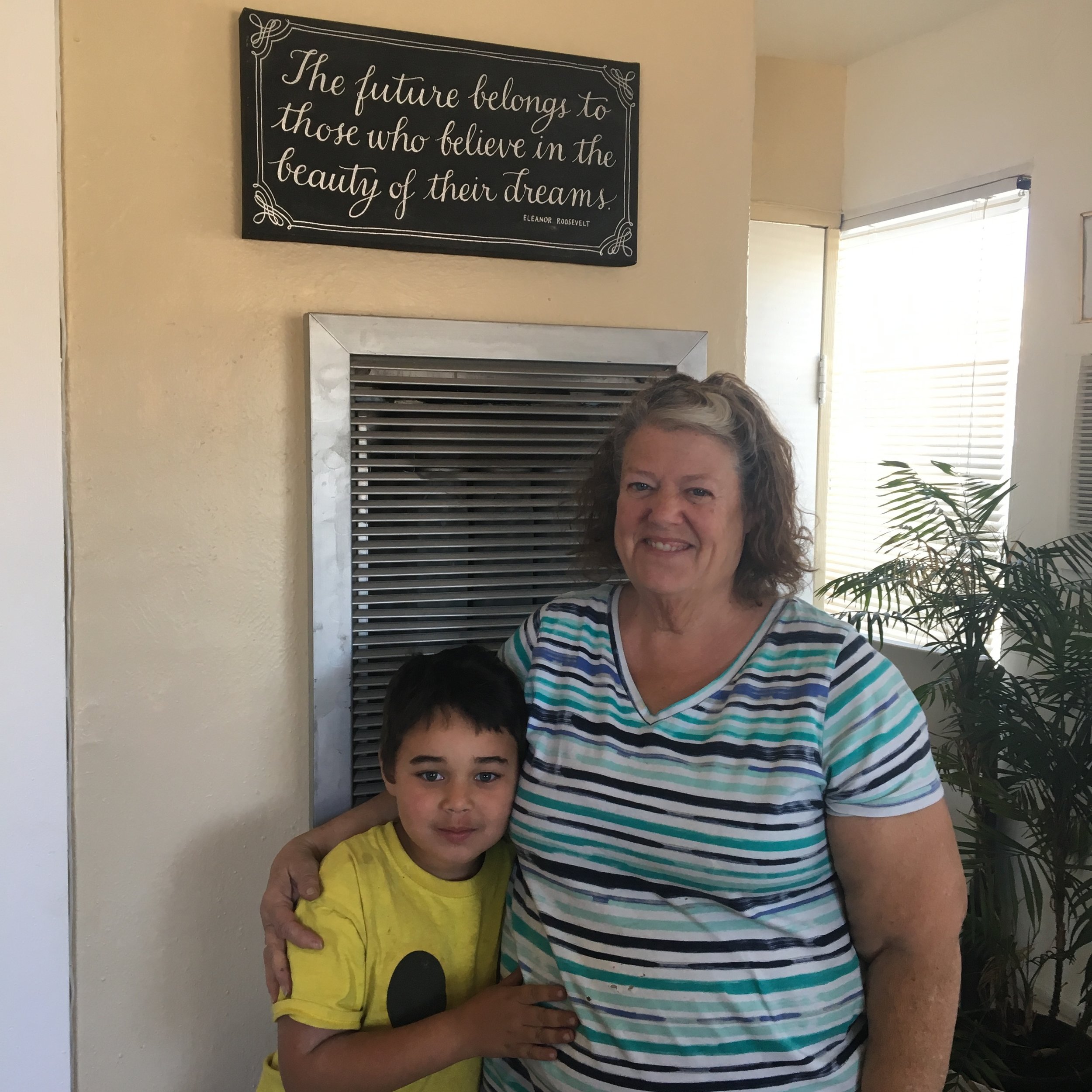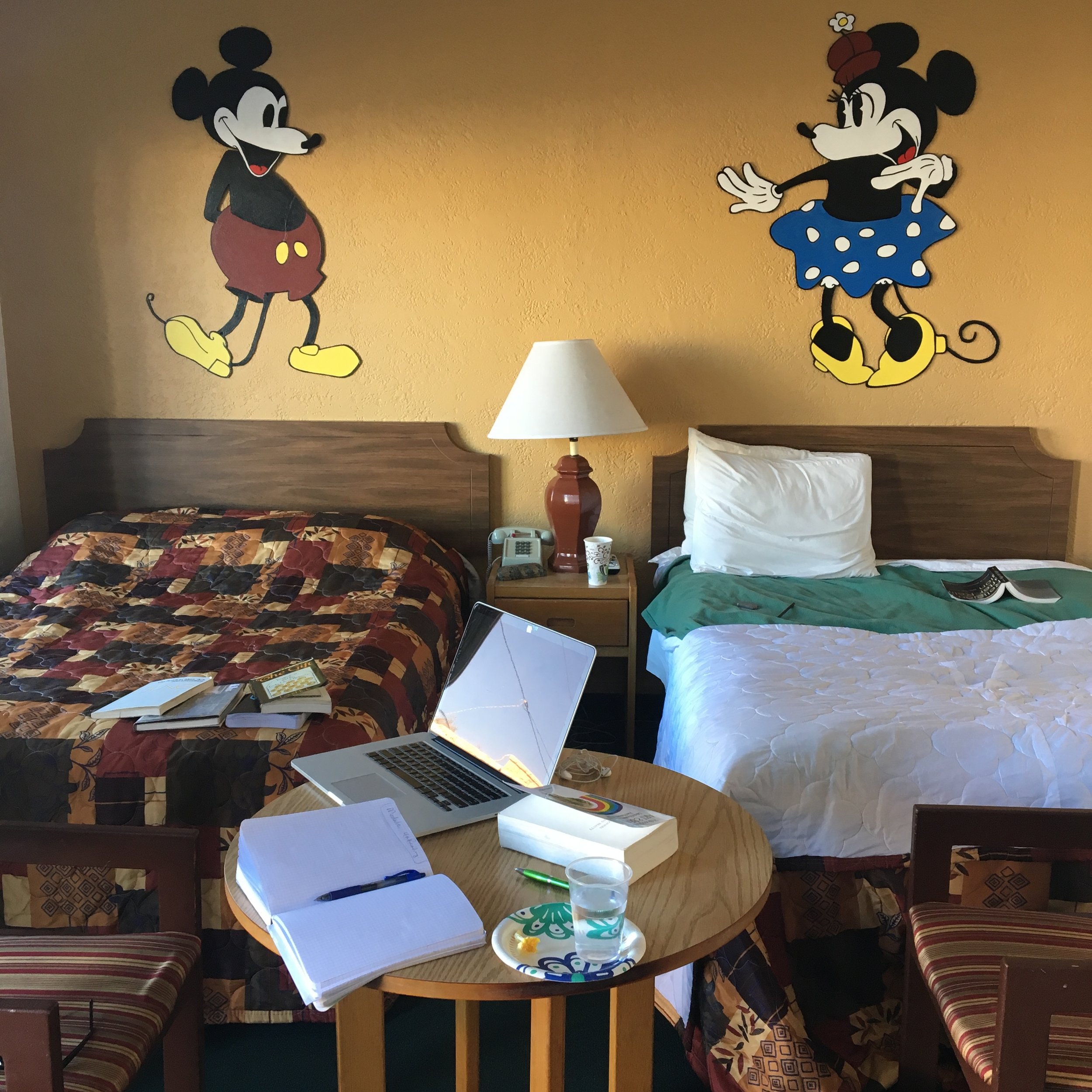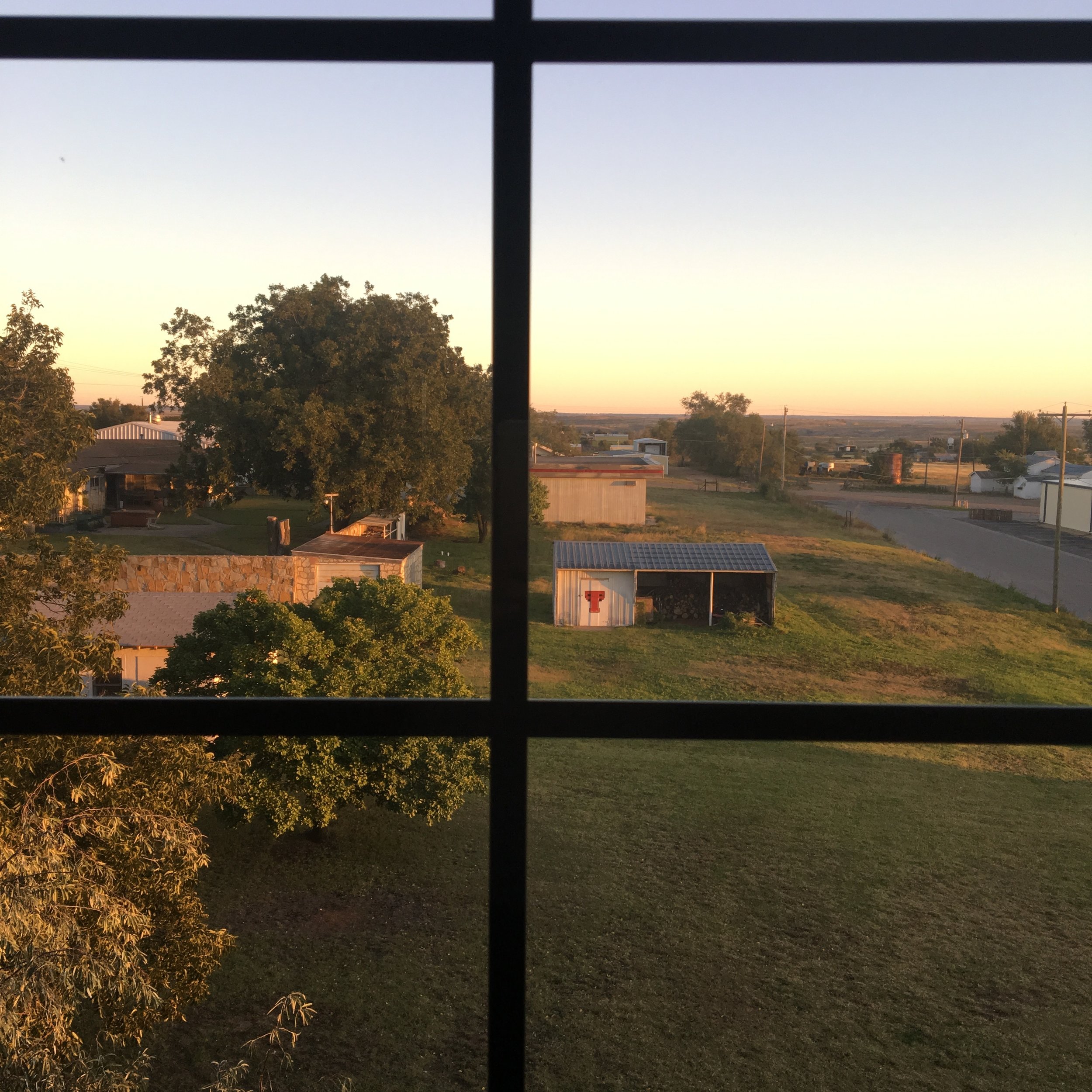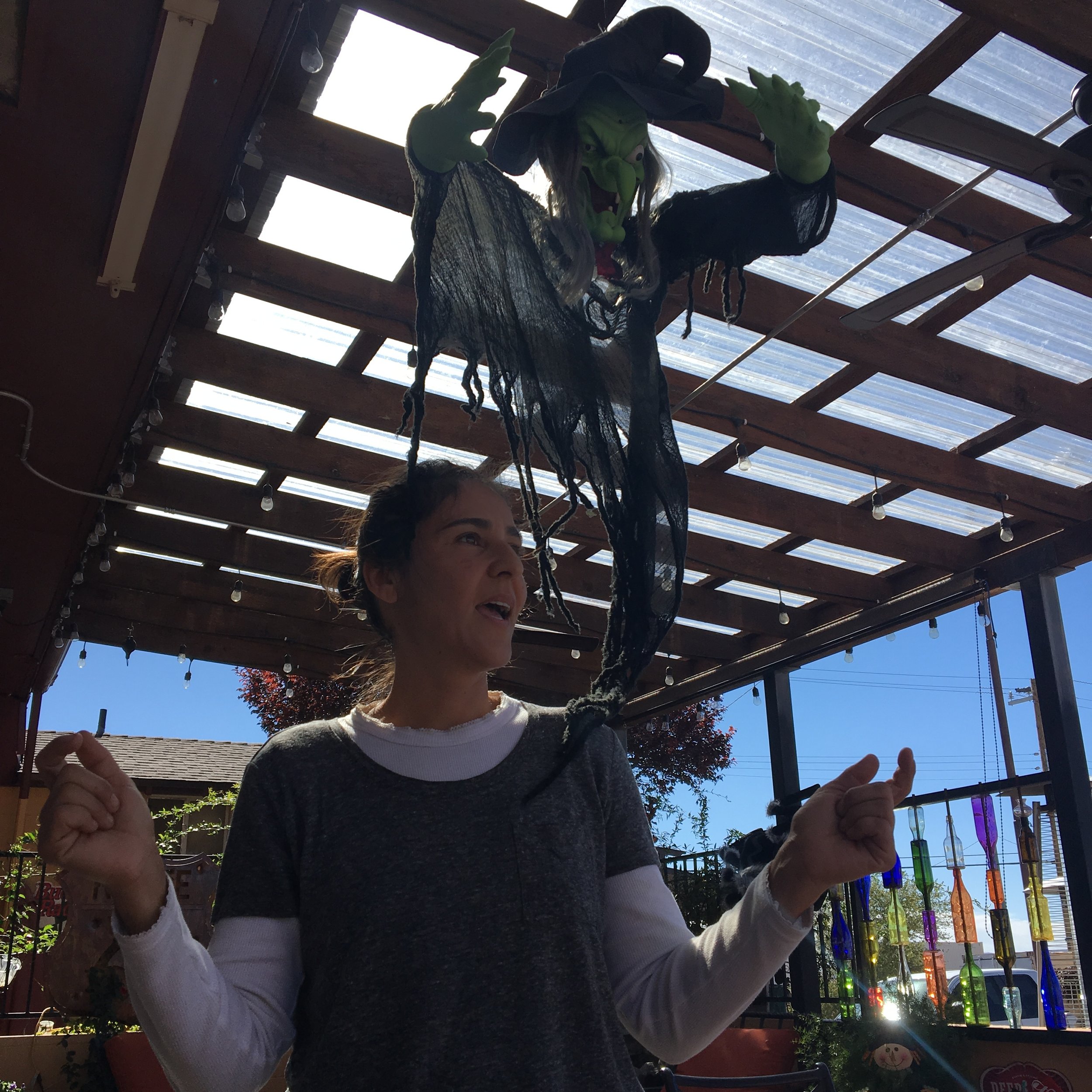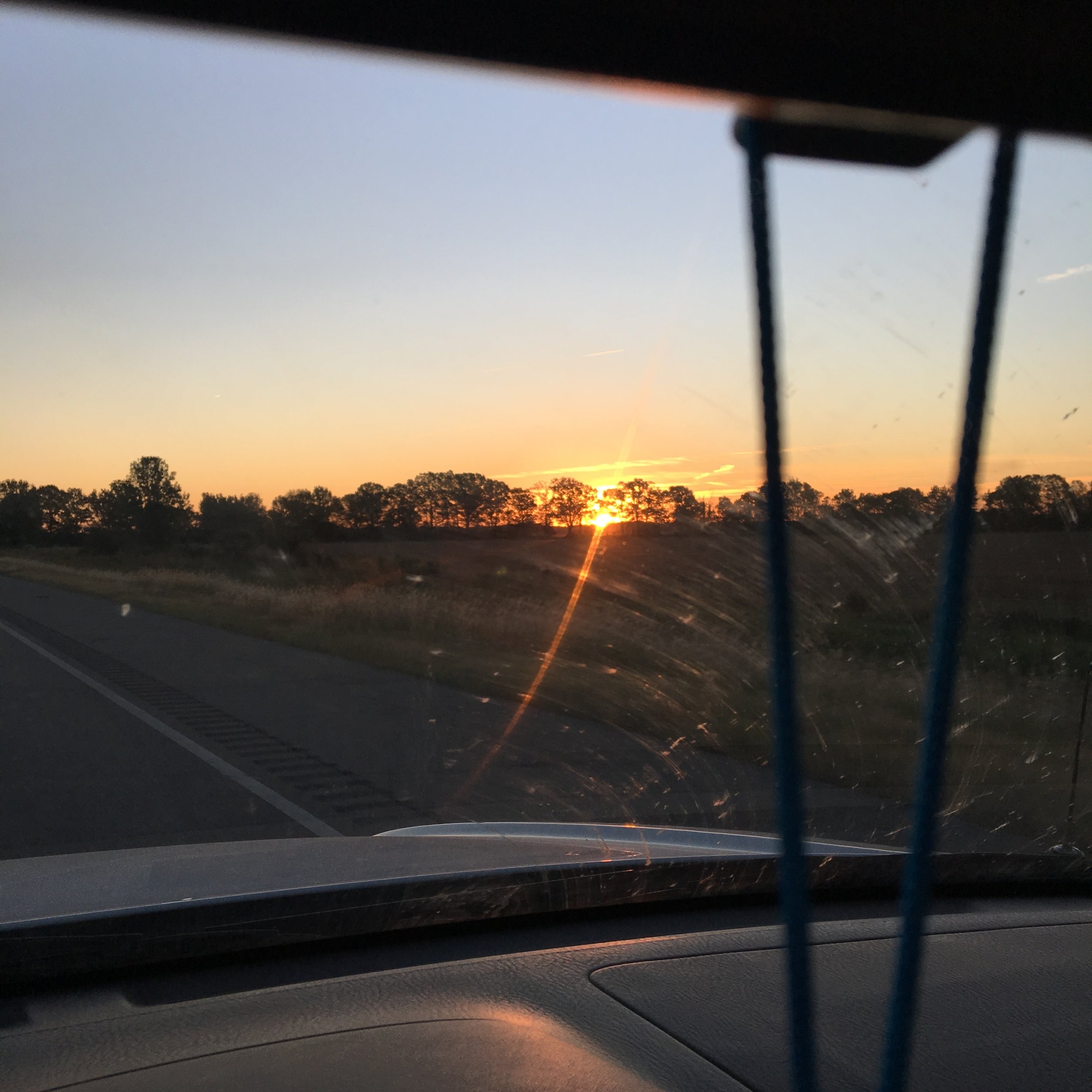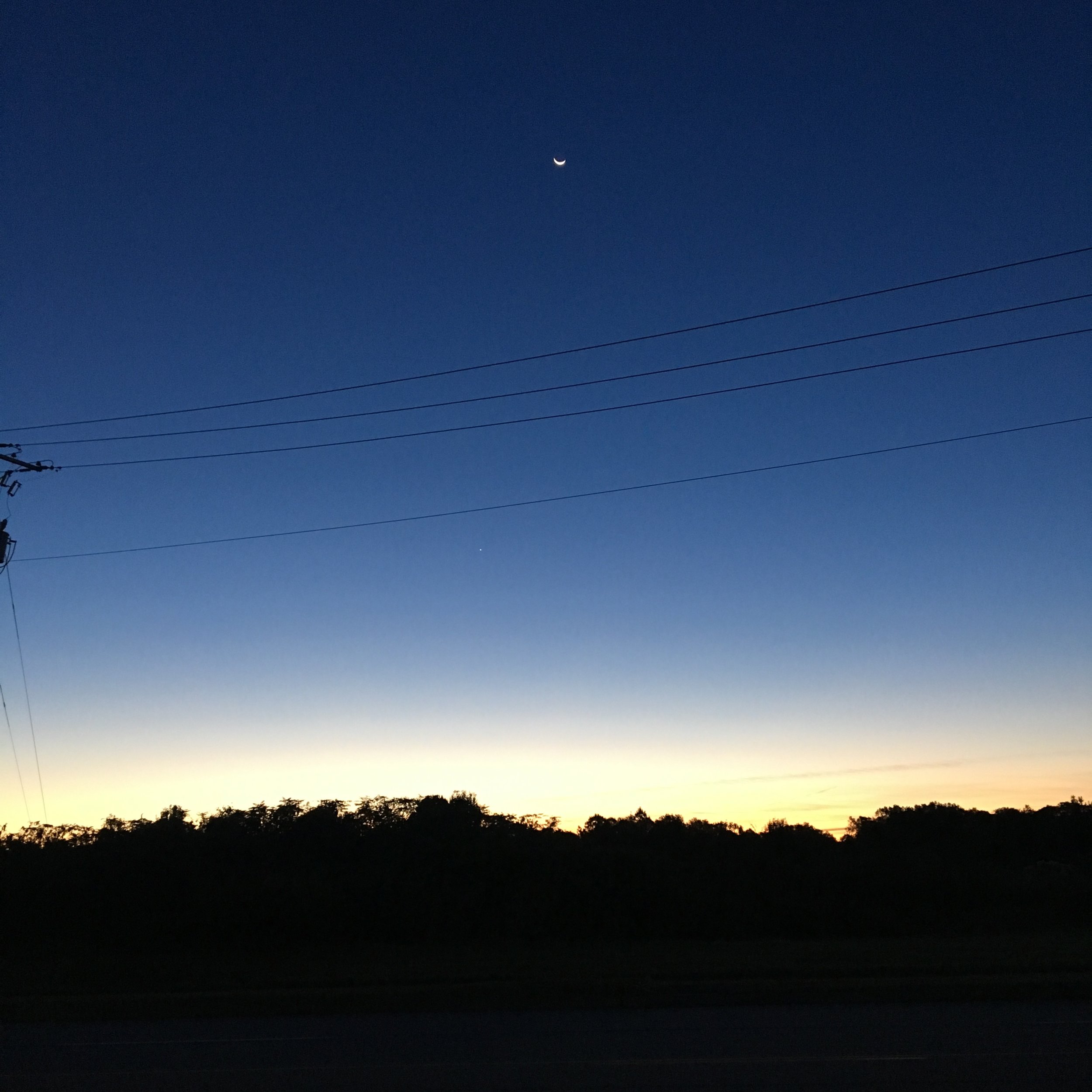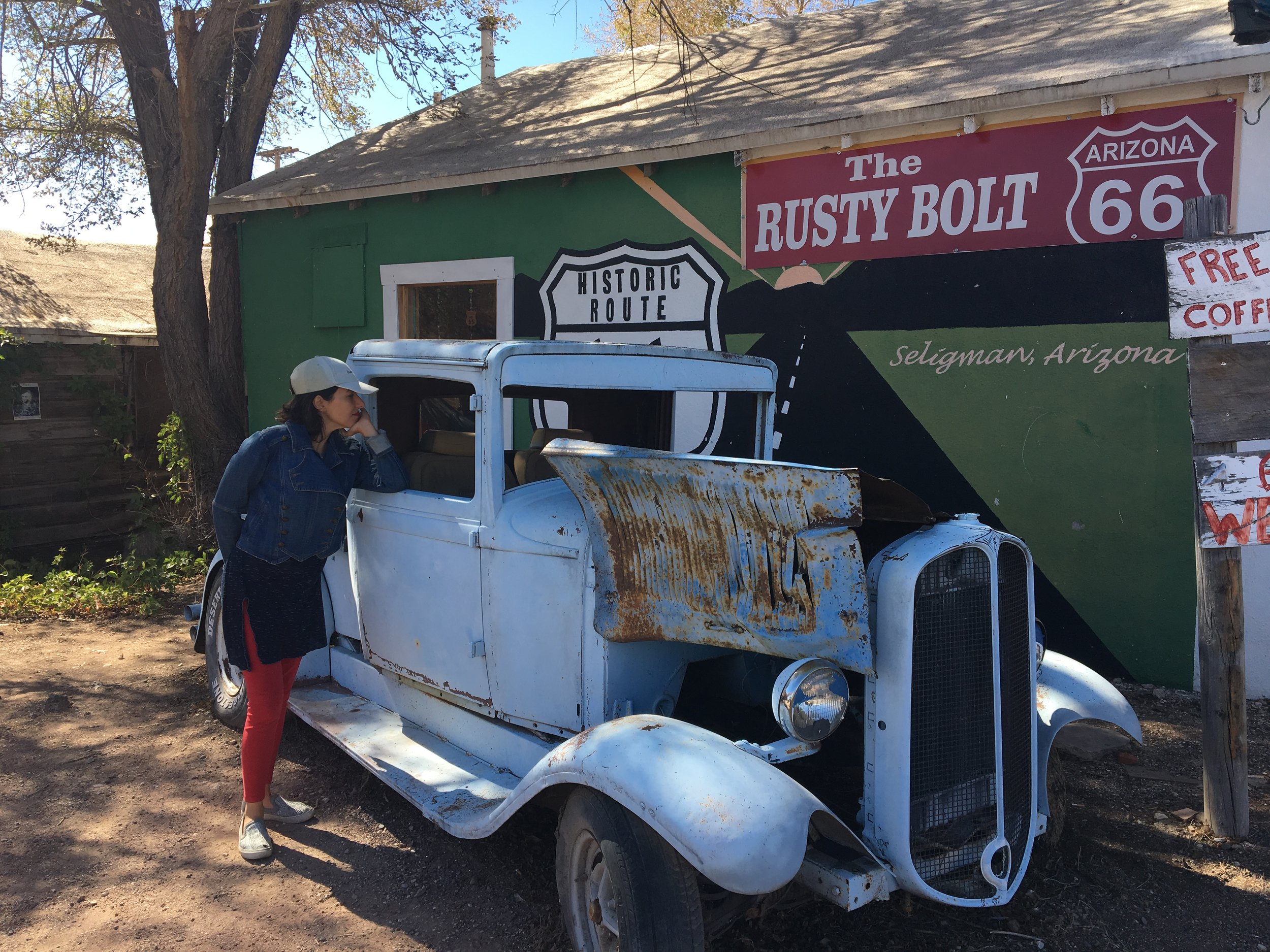A short video I created as part of my graduating work for the MA in Engaged Humanities and the Creative Life I recently completed at Pacifica Graduate Institute.
Jung
The Emerald City.
Two Essays About Finding Home in The Wizard of Oz
The Road Home, The Road To Self: Archetypal Anarchy in The Wizard of Oz
The iconic 1939 film The Wizard of Oz comes with a remarkable statistic attached: it is the most watched film of all time. This is in part due to its frequent appearance on broadcast networks worldwide but scholars believe the film possesses qualities which capture the imagination of the public in unique ways making it an always profitable choice for repeated broadcasting. Elements from this film have succeeded in penetrating cultural dimensions far and wide, necessitating an explanation for its unparalleled popularity. This explanation has been taken up by a number of writers and scholars and some of these will be explored in this essay. Observations about what appears to be a clear archetypal message in the film along with some of the differences with L. Frank Baum’s book The Wonderful Wizard of Oz (1900) will be offered and the salient parts of the film will receive a thorough going over.
The establishing shot of The Wizard of Oz is of a dirt road lined with uneven-looking low wooden fences. The road leads to the horizon where nothing is visible but the inevitable meeting of earth and sky. There is about this road an impression of dilapidated orderliness, a sense that the area has gone to seed, as it were, and this feeling is reinforced by the sepia-toned black and white photography. Dorothy bursts onto this drab and uninspiring dirt road accompanied by her little Cairn Terrier, the infamous Toto. She is deeply distressed and looks back over her shoulder frequently as though being chased by demons. Her dark fiery eyes look back with great emotion, her fear palpable, as she checks to see if Toto is all right. Dorothy and Toto then run home to the Kansas farm where Dorothy lives with her Aunt Em and her Uncle Henry. We now discover the reason for the agitation: Toto has been hit on the back with a rake by Miss Gulch, the wealthy neighbor. Toto’s life is in serious jeopardy but Dorothy’s relatives are too busy to listen for they have troubles of their own. The incubator has broken and the little chicks therein are threatened with imminent death and must be quickly counted and relocated. The action takes place with rapidity and Dorothy is clearly beside herself with worry. But Aunt Em believes that Dorothy is, as usual, getting herself “all worked up about nothing” and encourages her to stay out of everyone’s way someplace “where there is no trouble.”
This brings us to one of the most iconic moments in the film when Dorothy sings “Over The Rainbow.” Even after repeated viewings, this relatively short piece of film history casts a powerful emotional spell and pulls at the heartstrings, often bringing tears to the eyes of viewers. The message of the song is one of hope and longing. The beauty of Judy Garland’s unbiased voice, the innocence of the words, the gentle way they are imparted, and the simplicity and honesty of the melody all combine with such force that one is easily carried away into a dream of longing scarcely imagined before. Salman Rushdie believes that what Judy Garland “embodies with the purity of an archetype, is the human dream of leaving . . . .‘Over The Rainbow’ is . . . the anthem of all the world’s migrants . . . . It is a grand paean to the Uprooted Self, a hymn—the hymn—to Elsewhere” (Rushdie, 1992, p. 23 ). The song asks a simple question: Why? If happiness is possible, why can’t I feel it? It functions as an incantation and marks the beginning of the weird and elusive rite of passage that follows.
Despite Aunt Em’s assertion that Dorothy is just imagining things, the evil Miss Gulch does indeed materialize and she comes armed with a notice from the sheriff giving her permission to take the dog away to be “destroyed.” She forcefully threatens the withered aunt and uncle reminding them not to go “against the law.” Toto is stuffed in a basket and Dorothy, devastated, runs to her room in tears. This episode marks an encounter with the film’s ongoing interest in portraying the genuine inadequacy of adults and with the idea that belief in oneself can save the day. That Aunt Em and Uncle Henry are of no help is alluded to earlier, but their inability to save Toto from Miss Gulch brings this fact home in a final way, setting the stage for Dorothy’s upcoming travels. Clearly, she must take matters into her own hands for her parents are not around (no explanation is ever given for why Dorothy lives with her aunt and uncle) and her guardians are old, gray, and ineffectual.
After Toto manages to escape from Miss Gulch’s basket and returns to Dorothy, the pair run away. On the road not far from home, Dorothy happens upon an itinerant fortune teller called Professor Marvel who lives in a ditch under a bridge. Although well-meaning, he is nevertheless a charlatan, a sleight-of-hand trickster, but Dorothy, in her innocence, does not know it. She trusts his word completely and this empowers Professor Marvel to use his fortune telling skills to construct a woeful story about Aunt Em’s broken heart. Deeply concerned about her Aunt, Dorothy resolves to return home at once. Here we reach a crucial difference between the film and the book. In the original text, Dorothy remains at home, there is no threat from Miss Gulch (indeed, there is no Miss Gulch at all), and the tornado that carries Dorothy to Oz simply comes out of nowhere. In the first act of the film, however, a series of existential threats compel Dorothy to make a disturbing wish (for one so young) to be somewhere else, and then to run away from home altogether. Yet before anything meaningful can be accomplished, she must turn right back around, or, at the very least, quickly recalibrate her wish for “elsewhere” into a burning desire to be back “home.”
In his 2014 essay “There’s No Place Like Home: An American Koan,” David L. Smith argues that this moment in the film is what provides its penetrating archetypal dimension. In the book, no real emphasis is placed on the idea of home. Everything happens in episodic and often pointless meandering storylines. On the contrary, in the film, everything is about getting back home and this urgent need of Dorothy’s is established only after the meeting with Professor Marvel. The elusive nature of home, however, gives the idea mythical qualities which capture the imagination. According to Smith, “Home stands not only for the thing you already have but for something you desire, something you never fully possess. It is simultaneously where you are and an ideal for what it would mean to be fully and completely in place” (Smith, 2014, p. 288). Dorothy dreams of a place beyond the rainbow where there is no trouble and sets out to find it, only to discover, moments later, that she also wants and needs the thing she already has, the same Kansas home with all its inadequacies and troubles. In this sense, Dorothy’s dilemma perhaps symbolizes the dilemma of all Americans and, as Salman Rushdie claims, all migrants; Americans are, after all, the inheritors of a completely immigrant cultural heritage. According to Smith, “‘Home’ for the immigrant is both here and elsewhere. It is the immediate reality one longs to embrace and also the past or future possibility that keeps one from feeling fully in place, wherever one is” (Smith, 2014, p. 288). But something happens before Dorothy can return home and this something, namely, the tornado that carries her to Oz, is a larger than life symbol which states, unequivocally, that the home Dorothy seeks is more than just what normal life can offer her. A profound psychic transformation must occur within, for life in Kansas with her old and gray relatives is now unbearable. Somehow, over the rainbow and Kanas must merge, and perhaps this can only happen through a spiritual quest, something she must find out for herself since the grown-ups are useless. Dorothy discovers that “something is lacking” in her current state and she “imagines . . . that something remote will make up for this lack—that real life is elsewhere” (Smith, 2014, p. 289).
Another important distinction between the film and the book is the reality of Oz itself. In the book, Dorothy’s house is literally uprooted by the storm and literally transported to Oz, a real place. During the journey there, Dorothy is calm and unafraid and is even able to sleep. In the film, however, Dorothy, caught unawares by the storm, is hit on the head by a window pane and knocked out of consciousness. The film makes it clear at this point that she dreams or hallucinates an elaborate journey through Oz where people who inhabit her real life back in Kansas are cast as surreal otherworldly entities such as a Scarecrow, a Tin Man, a Cowardly Lion, a Wicked Witch, and an all-powerful Wizard. The fact that the journey to Oz is a dream is an important function of the film’s message according to David C. Downing. In his 1984 essay “Waiting for Godoz: A Post-Nasal Deconstruction of The Wizard of Oz,” Downing claims that the film is “one of the most devastating exposes of institutional religion ever to reach the screen” (p. 28) and it is precisely the dreaming Dorothy that evidences his claim. In Downing’s view, the unreal nature of Oz and its unfruitful wizard symbolize the unreal nature of religious practice and its unfruitful pointlessness. The “central thesis of the film” is, according to Downing, “that the metaphysical realm posited by religious devotees is nothing more than a projection of the physical realm, a place in which psychic deficiencies may be remedied and hidden longings may be fulfilled” (Downing, 1984, p. 28). Indeed, Downing points to Dorothy’s evasion of reality to strengthen his claim that the film mocks the escapism inherent in the religious worldview, with its heavenly, transcendent God who lives in heaven or, as Dorothy calls it, “over the rainbow.” In Oz, Dorothy is encouraged to follow the highly unrealistic, cartoonish Yellow Brick Road so that a godlike figure, none other than the wizard himself, can tell her how to get back home. Along the way, Dorothy acquires three companions, who “join her on her Grail-like quest, each in hopes of conquering some emptiness within” (Downing, 1984, p. 29). After some colorful adventures, the quartet finally discover “the wizard to be a fraud, a humbug, a genial old gentleman quite literally projected to larger-than-life proportions” who is nevertheless able to “certify to each one what he gained by believing in the quest” (Downing, 1984, p. 29) even as he remains unable to fulfill Dorothy’s and the film’s pivotal existential requirement. It is Glinda, the Good Witch of the North, who ultimately fulfills that requirement by soliciting from Dorothy the most enigmatic lines in the entire film, and this, in turn, brings us back to the paradox of home.
As mentioned above, the film opens with a dirt road. Much of the subsequent adventures take place along the Yellow Brick Road. Both roads are shown to be surrounded on either side by land that is mostly irrelevant to the story. The Road is visually highlighted and indicated as the primary means of travel; it, therefore, takes on its own archetypal dimension. “Just follow the Yellow Brick Road,” intones Glinda at the onset of the journey, implying that following the road will yield answers. In other words, the quest for home is shown to require a road, a means of travel, and a direction. Dorothy never actually leaves Kansas but rather dreams an elaborate dream from the comfort of her own bed, yet she somehow manages to undertake a real journey. What, then, is the nature of the road she travels upon?
After Dorothy’s three companions are “certified” by the Wizard, and the Wizard flies off without her in his balloon, Glinda arrives to undertake an accounting on Dorothy’s behalf and to stand witness to her inherent knowledge. Dorothy, she says, has had the ability to get back home the entire time, she just “had to learn it for herself.” When asked what it is she has learned, Dorothy says: “If I ever go looking for my heart’s desire again, I won’t look any further than my own backyard. Because if it isn’t there, I never really lost it, to begin with.” And, lo and behold, with this quizzical pronouncement, Dorothy is finally able to wake up from the dream, the elusive words “there’s no place like home” accompanying her on the road back to consciousness. There is a paradox contained in this ending and in the very statement “there’s no place like home” to which Smith convincingly points. That infamous statement contains within it a negative implication which says that there is not, in fact, any “place” like home; home is not a place that actually exists, especially not for the immigrant, and all humans are immigrants after all, for we are all here on this planet for a short time. We do not really know where we come from nor do any of us really know where we go after we die. We are all cosmic migrants on planet Earth just as many of us are human immigrants living in territories unknown. We have within us both an acute sense of belonging to our lives as human beings and a sense of not knowing who or what we truly are or why were are here. Home, then, is an elusive double entity, something we both desire and lack, and on this road home, our only guiding light is our heart and its desires. Dorothy says that what her heart desires ought to be right there in her “own backyard” and if it is not, then how can it be lost? How, indeed? Smith says, “What is at stake in the desire for home is something immediate and inalienable, however elusive it may feel. Life, self, and the world are givens, not remote ideals to be attained” (Smith, 2014, p. 290). As has been pointed out, the film seems to say that no one else can tell us how to get home, that we must learn it for ourselves, but that this knowledge is implicitly our own from the beginning. While people in positions of power will try to claim knowledge of the way, ultimately one must travel an interior road, integrating the diverging, contradictory, and paradoxical aspects of life into something immanent and whole. “It is precisely because home is a wholeness implicit in our immediate circumstances that it is not comparable to any other place” (Smith, 2014, p. 290). Indeed, it is this unbound yet inherent nature of home that allows it to be both the desire of our hearts and its fulfillment. “Because home” is “no place, and not a thing to be attained, it is an inalienable possession” (Smith, 2014, p. 291) and therefore cannot be lost.
Another significant element of the film is its insistence on the wonderfulness of the wizard, this claim is repeatedly expressed in the song “We’re Off to See the Wizard” in which the wizard is declared a wizard strictly because of the wonderful things he does:
The Wizard of Oz is one because
Because, because, because, because, because
Because of the wonderful things he does
We're off to see the Wizard
The Wonderful Wizard of Oz
Indeed, the film is filled with images of wonder and one can only imagine the reaction of viewers back in 1939. The production is said to have cost nearly three million dollars and apparently, no expense was spared. Like many other popular children’s books turned into film, The Wizard of Oz contains highly surrealist imagery that show the protagonist involved in adventures with fantastical creatures such as talking trees, flying monkeys, good and bad witches, munchkins, horses that change color, magical ruby slippers, flying houses, and powerful wizards who live in emerald cities. In his introduction to The Shadow and Its Shadow: Surrealist Writings on the Cinema (2000), Paul Hammond says that what the Surrealists desired was to “follow the exemplary ‘trajectory of the dream’ as it revisioned daily life” for they believed that “only by reforging links with . . . the ‘primal mind’—the mind at one with nature, expressing itself through the imaginary—could the real be fully comprehended and thus recast according to human need” (Hammond, 2000, p. vii). As a visual text on the power of wonder-full images, The Wizard of Oz undertakes this surrealist maxim with considerable “vim and voive,” for as has already been shown, the entire adventure is a faithful following of a dream road, that “exemplary trajectory” of Dorothy’s dream of a homeward journey. The film shows how the reality of waking life alone is insufficient for the task of living a fulfilled life and points to what Silke Dettmers, calls “the necessity of wonder” as a means of travel: a mystical yellow brick road one may traverse in order to integrate the “primal mind” with the “real.” Throughout the film, Dorothy’s evocative eyes are like infinitely deep searchlights expressing pure amazement (along with pleasure, pain, confusion, joy, and horror) at witnessing such dramatic imaginal wonders. Dettmers (2007) says that “staring is the beginning of getting to know the world” (p. 2) and so it is through staring that Dorothy registers the profound wonders of her surroundings as they pour into her psyche. “Wonder, ‘the first of all the passions,’ prioritizes the senses, it is populated by images” and is a state “before words and reason” (p. 4). Accordingly, “wonder is the opposite of proof,” the proof that is sought by the logical mind of reason, the mind that cannot allow anything to exist unreasonably. For Dorothy to escape what is a most unsatisfactory existence in Kansas, she must overcome the boundaries set upon her by the dull, gray world she inhabits. This task she duly undertakes by losing consciousness and traveling straight to the unconscious where dreams, images, and the wonderful are given free reign to activate “the spaces between,” opening up “a multitude of possibilities” rather than just the one presented to her in Kansas: grow old, live without wonder, and die. The Wizard of Oz, like Surrealism, unequivocally rejects the world where one cannot “go against the law” and instead proceeds by “privileging . . . the poetic imagination as the keystone, the binding agent, of authentic understanding” (Hammond, 2000, p. 3).
The film, therefore, proposes the adoption of an anarchic attitude toward religion, parentage, heritage, and place; this is why it is so popular. It tells us that we do not need institutions or people in powerful places to give us what we seek for we already possess everything. Indeed, it goes one step further, calling into question the authority we ourselves give to these same institutions and powerful individuals. It wonders why our teachers and leaders adorn themselves in cloaks of power and authority when they are equipped with nothing more than sleight-of-hand skulduggery and puffs of ineffectual smoke. The Wizard of Oz seeks to return power to the individual and questions the validity of the spiritual quest, the mono-myth of the heroic journey, as the only viable approach to life. It shows us that the road home is the inherent and given birthright which we all have unimpeded access to every evening when we lay down our heads and go to sleep, and even explains why there are so many drugs on the market trying to keep people apart from their inner selves. It reminds its millions and millions of viewers that the poetic imagination is the liberating and anarchic road to self, the true road home, and all one need do is follow it.
References
Downing, D.C. (1984). Waiting for Godoz: a post-nasal deconstruction of The Wizard of Oz. Christianity and Literature, 33(2), 28-30.
Dettmers, S. (2007). On the necessity of wonder. Papers of Surrealism Journal, Vol. 6., Retrieved from http://www.surrealismcentre.ac.uk/
Hammond, P. (2000). The shadow and its shadow: Surrealist writings on the cinema. San Francisco: City Lights Publishers
Rushdie, S. (1992). The Wizard of Oz. London: UK. BFI Publishing.
Smith, D.L. (2014). “There’s no place like home”: An American koan. Journal of Religion & Popular Culture, 26 (3), 287-292. doi: 10.3138/irpc.26.3.287
Epic photo of Margaret Hamilton as The Wicked Witch of the West.
Out Of The Woods: Hestia, Dorothy, and the Mythic Quest for Home
Part 1: There’s No Place Like Home
For many people, both the idea and the physical reality of home are enshrined in perpetual mystery. Somehow, for them, home is never truly present, even as they live in one. Constant moving, often across oceans and continents, means that there is no ancestral place, no home base, and no continuity. For this type of person, lack of an ancestral home sets the stage for a life-long quest. Something profoundly important is missing and longed for; it must be regained. A closer look into the nature of this quest, however, shows that it goes beyond the individual. Longing for home appears to be a broader, almost universal theme, one that is echoed across cultures throughout history, an idea that often transcends physical parameters or attributes. Indeed, under careful scrutiny, “home” becomes an elusive and unattainable mystery that must nevertheless be sought and found. Yet, that it shall be found, or that it even exists, is never guaranteed, which makes an ongoing quest for a literal home potentially problematic. Looking at the 1939 film, The Wizard of Oz, and the myth of Hestia and her relationship to the home, this essay will attempt to solve the riddle of place. Dorothy claims that “there’s no place like home,” while others have said that “home is where the heart is.” An examination of the truth of each claim will show if Home is something that can, indeed, be lost and found.
L. Frank Baum’s famous book, The Wonderful Wizard of Oz, differs from the movie in many ways but that is not the subject of this paper. Here, the focus will be on the film version. In the iconic film, a simple story is laid out and we, the viewers, follow Dorothy as she sets out on a magical journey which, paradoxically, begins with her running away from home. Dorothy is a young girl living in Kansas with her Aunt Em and her Uncle Henry during what appears to be the Great Depression. Her aunt and uncle are old and gray, the farm is dusty, and the landscape is flat, barren, and lifeless. As the film begins, we see that Dorothy’s beloved and loyal companion, Toto, is threatened with euthanasia by the evil village schoolteacher and Aunt Em and Uncle Henry are powerless to stop it from happening. Dorothy decides to run away but before she gets very far, she meets Professor Marvel, an itinerant fortune teller, who, perceiving Dorothy’s youth and innocence, uses his “powers” to show her an image of Aunt Em in deep distress. This encounter turns Dorothy around to face home again but before she can fully return, a tornado comes between herself and her family, transporting Dorothy and her house to the magical Land of Oz. Once there, Dorothy embarks on a classic heroic quest which inevitably leads her back home.
In his 2014 essay, “There’s No Place Like Home: An American Koan,” David L. Smith argues that this pre-quest meeting with Professor Marvel is the most important moment in Dorothy’s story, for it alters the mystical locus of her quest from “somewhere over the rainbow” back towards “home” (p. 289). But home is a concept that eludes, for surely Dorothy does not seek the actual home in the depressed Kansas farm where her dog’s life remains in danger, nor does she seek her Aunt and Uncle’s withered and wizened lifestyle. What she seeks is what many of us seek, and what Smith calls an “existential tautology,” for “Dorothy longs for a home that is both immediate and remote, at once in her own backyard and over the rainbow” (p. 287). This is shown in the remarkable speed with which she switches direction. Indeed, Dorothy never actually leaves home. She simply takes a stroll down the lane and turns right back around again. As we see at the end of the film, Dorothy, having lost consciousness during the storm, essentially hallucinates her way through Oz. Her adventure is therefore really an interior one which fits in perfectly with the paradoxical nature of home. Her emphatic claim that “there’s no place like home” has a negative implication, suggesting that there is not, in fact, any “place” like home. Therefore, inherent in the statement is a double meaning which pits a nostalgic and ambiguous desire of the heart against the reality of human existence where such desires are not always fulfilled. As Smith indicates, “‘Home’ stands not only for the thing you already have but for something you desire, something you never fully possess . . . . The given-ness of home is closely shadowed . . . by a sense of displacement” (p. 288) [Italics mine]. This feeling of being split between having and not having is one keenly felt by immigrants and immigrant cultures, to whose milieu Dorothy’s story and American cultural heritage both belong. However, the paradoxical desire for home both “here and elsewhere” is obviously problematic. In it there remains a constant sense that something is lost and a great striving must be continuously in place to retrieve the lost “thing,” creating a perpetual feeling of dissatisfaction. This longing “is intensely present but likely to be shadowed by a nostalgia or an aspiration that simultaneously enriches and discredits the life one lives” (Smith, 2014, p. 288). This problematic yearning necessitates a deeper understanding and realization of the immanence of the self and the inherent nature of home if a never-ending, and ultimately unproductive journey, like the one Dorothy takes, is to be avoided. Dorothy and her companions discover that they were always in possession of the very things they sought, for “each—if only he or she could have known—was always already whole, always already home” (Smith, 2014, p. 290). The great and powerful wizard is, after all, a self-involved used car salesman who only has the power to give them images of things they already possess. The foursome friends circumambulate the inner psychic circle symbolized by Oz, reach the axis mundi, the Emerald City, and “learn for themselves” what they already knew. In the end, the Scarecrow asks,“What have you learned, Dorothy?” and Dorothy, enigmatically, says, “If I ever go looking for my heart’s desire again, I won’t look any further than my own backyard; because if it isn’t there, I never really lost it to begin with.” Here, finally, is the answer to the unproductive longing that haunts the perpetual seeker: whatever there is to find is already there, and if it is not, then how can it be lost? It is a paradox that says, “What is at stake in the desire for home is something immediate and inalienable, however elusive it may feel. Life, self, and the world are givens, not remote ideals to be attained” (Smith, 2014, p. 290). In other words, what we seek is entirely present and intimately our own, even as it oscillates between immanence and remoteness, carrying our hearts hither and thither in great undulating arcs. A heart’s desire is, after all, in perpetual flux, and therefore, where the heart is (the very state of home/heart-ness), is necessarily in motion, multitudinous in scope, and elusive, even as it resides in a fist-sized, compact space.
Part 2: Home is Where The Heart(h) Is
On their 1971 album, Abbey Road, The Beatles point to the paradoxical nature of a heart’s desire and how difficult it is to define or grasp, much less obtain: “Out of college, money spent. See no future, pay no rent. All the money’s gone, nowhere to go. But, Oh! That magic feeling! Nowhere to go.” The universal aspect of this desire for home gives it an archetypal dimension. According to C. G. Jung, archetypes are primordial psychic patterns contained within the collective unconscious and they are busily at work in all our lives. They are responsible for drawing consciousness into being, facilitating the development of form and meaning. Archetypes are themselves formless and can communicate through images most commonly encountered in dreams, myths, and the symbolic imagery found in films, television, and the visual and literary arts. Furthermore, the archetype is autonomous, “it lives of itself . . . it is a life behind consciousness that cannot be completely integrated with it, but from which, on the contrary, consciousness arises” (Jung, 2014, p. 26 [CW 9 pt. 1 para. 57]). In her 2006 doctoral dissertation, Maren Hansen discusses the psychological function of archetypal myths and shows how we can utilize a myth to help us understand the inner workings of the psyche. She says, “We vicariously experience a psychological journey into our unconscious by identifying with a myth, thereby bringing into consciousness some material that was previously unconscious” (Hansen, 2006, p. 63). Greek gods and goddesses are good examples of such myths, and since the concept of home has proved elusive and problematic, it may be useful to hitch a ride on one of these archetypal myths to search for home deep within.
Hestia is the Greek goddess most closely associated with the home and with this interiority of the heart’s desire, where the fire of love has been known to reside. Ginnette Paris says that Hestia, as an archetypal representation of a circular fire, is “the center of the Earth, the center of the home, and our own personal center” (Paris, 1986, p. 168). In Greek homes, the Hestia, or hearth “was the heart of the home, the place of intimacy for the group or family” (Paris, 1986, p. 168). In ancient Greece, this flame of the hearth was considered sacred and eternal, and it was carefully maintained, both at home, and in the city center where it was tended by virgins. The idea seems to be that the center must be tended to and kept warm and alive through careful focus, which is the Latin meaning for Hearth. According to James Hillman, Hestia’s psychological function is “as the centering attention that warms to life all that comes within its radius” (Hillman, 2007, p. 235). Hestia is, therefore, the goddess that brings into focus the fire of necessity and the necessity of fire, the one who embodies the warmth of the heart(h).
What has happened to the one who has lost (the way) home? Where is her heart(h) and where her fire? For the person who lives in a psychic-self-as-home where the fire has died, either because of too much outward movement, or too much giving way, so the centrifugal force of attention can no longer hold the center, “the flame that will re-animate the house must be sought elsewhere” (Paris, 1986, p. 169). This is the central problem of the homeless—the sacred, centering, and continuous fire of love within the heart has died and only through complex rituals, rites, and perhaps even a lifelong quest that takes us “elsewhere” can it possibly be relit. This is exactly the elsewhere Dorothy seeks “over the rainbow,” for in Dorothy’s conscious life, there is nothing but a future of drudgery, dusty old age, and decay. The promise of elsewhere is both the frustrating duality of something remote and its antithesis, an ever-present center, for, again, the warmth and love of Aunt Em remain realities to which Dorothy wants to return, realities that were accessible even before she left. How, then, can we reanimate and embody the flame of the hearth, the heart of our desires, the one we run from and the one we seek? If our efforts continually lead us back to a paradox, then how can we live an embodied life, how can we bring harmony into our midst? The answer is that there is no one correct answer. The reality of human life includes vast psychic dimensions that are perpetually in motion, and the inhabitants of these dimensions seek to live out the many possibilities inherent in a vastly creative primordial soup. There is no tidy answer to the riddle of longing or to the paradox of wanting to be both here and elsewhere. Just as we live an ego consciousness in our daily lives while simultaneously inhabiting infinite realms of unconscious spaces, we desire unimpeded access to our own interior space and we want to discover other worlds and dimensions decidedly outside of and away from that space. To live comfortably within the fiery interior space of the heart-as-home, keeping the Hestia, the focus, clear within the heart, while moving easily through the multivalent dimensions of the world-heart in broader lands “over the rainbow” seems to be the ultimate lesson of The Wizard of Oz. Any search for home is a circular journey back to the center of the heart/self where the message is very simple: “All is well. Tend the fire. Stay focused.” There is no place like home, but home is where your heart is, right now, even when right now includes being “assaulted by the forces of darkness.” So long as the fire is tended, the center will hold. Then, when this sacred focus is achieved, the warmth of the heart(h)’s fire will manage to re-member “a brain . . . a heart . . . a home,” and “the nerve” required for life to continue. With the flame relit, the heart(h) is healthy and happy, crackling merrily in the center of soul once more. The fire holds the center allowing the paradox of home as both immanent and remote to continue its artful dance. For without this dancing there would be stasis. Fire needs fuel, after all, and that is what the paradox provides.
References
Hansen, M. (2006). An evaluation case study of a myth class to stimulate identity development for early adolescents (Doctoral dissertation). Retrieved from Saybrook University, ProQuest Dissertations Publishing. (3264599)
Hillman, J. (2014). Mythical figures: Uniform edition of the writings of James Hillman, Vol. 6.1. Dallas: TX. Spring Publications.
Jung, C. G. (2014). Archetypes and the collective unconscious. The Collected Works of C.G. Jung: Complete Digital Edition. Princeton: NJ. Princeton University Press.
Paris. G. (1986). Pagan meditations: Aphrodite, Hestia, Artemis. Dallas: TX. Spring Publications.
Smith, D.L. (2014). “There’s no place like home”: An American koan. Journal of Religion & Popular Culture, 26 (3), 287-292. doi: 10.3138/irpc.26.3.287
The Nutshell is what we named my car after I compared living in the car with Hamlet's willingness to count himself the king of infinite space, bound in a nutshell.
The Summer of Reckoning
They say the things we learn from parents, family, and community during the first twelve years of life become entrenched in the psyche and form a kind of hardwired code we end up following forever, often without any awareness. In the world of depth psychology, James Hillman has been a pioneer, insisting that viewing the limitations and traumatic experiences of our youth as pathologically devastating is incorrect. He saw challenging childhood experiences as vital components of the total package, just as necessary to the fated outcome of one’s life as ten toes, ten fingers, and a healthy, functioning liver. While this may be true (and, of course, seeing the events of one’s life as the crucial building blocks of destiny can certainly alter the psychic vibe), it does not change the fact that a sort of code is written in the soul, and, for a time, at least, we follow this code to the letter regardless of how it bodes for us. I say ‘for a time’ because it is my firm belief that we must question and closely observe the code, then slowly transform its detrimental aspects while strengthening and following its creative and transformative prerogatives.
It’s a tall order.
Because of my own code, I learned from an early age that instability—emotional, financial, familial—was the correct ground upon which to build my life. I was never really taught how to grow up and earn a living. To say my parents coddled me and failed to set the right kinds of examples would be an understatement. But let’s say that this was necessary because it gave me the powerful urge to question (economic) reality, and to question, observe, and discover the meaning of value. I admit that if I had had a happy family life, a steady upbringing, and enough money I would not have been infected with a terrific passion for finding out what is real, and what really has true value.
I was living a fairly stable life one moment, and the next moment I purposely threw napalm on it, insisting that what I was doing was for the best, that it needed to be done, that it was the calling of my soul, that it would lead me to where I needed to go. The endeavor involved me living in my car in Los Angeles for three months, which I did. I felt a need to drastically restructure of my life—literally, mentally, spiritually, emotionally. I still felt immature, I couldn’t seem to get my head around economic responsibility, I couldn’t spiritually jive with the outward manifestations of that responsibility, the way my stability necessarily funds the instability of others. I couldn’t make peace with all the iniquity. Napalm was poured on my idyllic little scholar’s life in upcountry Maui, and so began a maddening and enlightening journey into the death of old, familial, inherited ego, for that is what ultimately happened.
I embarked on this journey, going from Maui to Washington, D.C. in late June of last year. Preparing for the trip, I gave away almost all of my possessions (clothes, shoes, food, kitchen stuff) keeping my precious sound system, record collection, and my books. I did a ton of research about car living, I made all my plans, and I shipped my car to LA. I went to the airport (all this, incidentally, with my beloved pooch, Georgie in tow) and flew to D.C. where I had signed up to give a twenty-minute presentation on the topic of what I’m calling Archetypal Disco to the Jungian Society for Scholarly Studies. As I meandered through the conference, I felt myself living with a secret—I am homeless! The fact that I had elected to go live in my car had no bearing on the feeling of being officially homeless. After all, I chose to live in my car because, a) I was determined to move back to the mainland and live closer to school and b) because I didn’t have enough money to ship my car, go to the conference, and pay first and last on a new place to live. I had made all sorts of justifications about why this would be like a spiritual “Time To Grow Up” boot camp, but I nevertheless hit my head hard on the feeling of being a loser. This was, of course, part of my plan. Like many other people all over the world, I suffer from feelings of inadequacy. My feelings of inadequacy were placed inside my soul early on when my father said things like: “You are so fat I am embarrassed to introduce you to my friends,” and countless (countless) other detrimental word gems a father should never say to his daughter, repeated at a variety of ages so the message got inside good and deep. I’m not boohooing, everyone has these monsters in them, some more than others. But, again, this and other inherited and/or self-inflicted wounds and fears were exactly the monsters I was hoping to vanquish during the summer of car living.
In truth, the summer itself ended up being a little miracle. After a few initial weeks of intensity and fear, I found a groove that worked for me. I wasn’t working so I had all day to do whatever I wanted. I would wake up in the morning, go to nearby Balboa Park and walk with Georgie. I had a system of getting hot water just before bed each night from the nice kids at Coffee Bean so my tea would be ready in the morning. After the walk, I would meditate under a tree in the park. Then, Georgie and I would have breakfast in the parking lot and wash up in the bathroom, both of us brushing our teeth and our hair. I would change clothes, put on some makeup, and head on over to Coffee Bean to complete the day’s schoolwork. I became one of those people who sit in a cafe with headphones on, staring at their computer for hours. Sometimes I had other things to do but mostly that was it. I would draw and write and read at Coffee Bean and/or at the park. I was lucky because it was a fairly cool summer with only occasional heat waves. In the evenings, I would go to the gym and work out for an hour, then I’d shower and get back in the car. I would park in the Coffee Bean Parking lot and watch TV on my computer since there was free Wifi in the parking lot. Georgie and I would eat our dinners. Then, as I said, I would get hot water for tomorrow’s tea and we would drive to our little location on White Oak Avenue and go to bed. I had built a platform in the back of the car with a mattress on top and all my stuff in containers underneath. I had a cooler where I kept my food and I’d get ice every couple of days. I adapted and learned how to do it. I knew it was temporary, so it was fine. I wrestled with self-hatred and pride, and I faced many fears. I kept up my Zen practice and even made some important progress on my path of non-attachment. I saw a lot of people living in all sorts of cars in all sorts of levels of (dis)comfort. Many looked like normal people—innocent victims of the massive inequality crisis in America, made worse by the massive Los Angeles housing crisis. I even called NPR during their weeklong exposé on car living and homelessness in LA, and I spoke to them about my experiences and how they were impacting my life.
Georgie taking an afternoon nap in the Coffee Bean parking lot.
The point of this journey was to make a new life in California, closer to friends and family. I felt I had been isolated in Hawaii for far too long. But there was nowhere to live that I could afford. Nowhere nice, anyway. Meanwhile, my younger brother suddenly confirmed that he was indeed in the country and on his way to college at Virginia Tech. Suddenly, all I wanted was to be near him and it turned out the rents in Virginia were very affordable. I felt I wanted to become a big girl with a big girl house, I wanted to have an extra bedroom, some extra space, not be squashed into a tiny box, working two jobs to pay for a crappy little life on the corner of Noisy and Ugly.
I started (again) to weave a big fantasy for my life. I will build an herb farm and a school and a disco! I will change the world and make money and get a Ph.D. and fix my family life and, and, and . . . . I planned a perilous cross-country journey to Virginia. I paid a lot of money for a place I thought was perfect—a three bedroom farmhouse with a separate studio where I could paint, all on five acres where I would build the herb farm, art school, and disco. I knew that my money situation would be very tight, and all the while I had a lot of anxiety eating away at me; anxiety I tried to avoid. If something went wrong, things would get really bad. The whole thing was built on false hope and I kept trying to make myself believe it was the right thing and that everything would work out perfectly. But fear and anxiety and worry and doubt plagued me like some diabolical chorus singing songs of woe.
I departed LA with my dog and BFF, Maryam, on Monday, October 9th, 2017. I was so nervous and worried and my stomach was churning with fear. Not exactly auspicious vibes. Within an hour my jacket flew out of the window. A few hours into the trip, the car broke down. We ended up stranded in Seligman, Arizona for four days, bleeding money and bleeding soul juice. I was, on the one hand, jovial and making the best of things, and on the other hand, filled with terror and fear. What kind of terror and fear? That needs a whole new paragraph.
I don’t know whether you’ve ever experienced this, for me, it was a new perspective. I got the first indication of it on July 4th, which was the second day I lived in my car. I had managed to run around all day and pick up all the stuff I needed (wood, tools, mattress, plastic containers, coolers, etc.), but it was very hot and I felt harrowed the whole time. I had secured my best friend’s driveway so I could empty out my car, take out the back seats (I had watched Youtube tutorials that taught how to remove the seats) and build my platform bed. I chose 4th of July because her roommates would be at a pool party all day. Because, all summer, we lied to Maryam’s roommates and to everyone else including my mom. Lied through our teeth. I told everyone I found temporary, cheap housing nearby. We didn’t want to burden everyone with what would have been a very difficult thing for them to understand or live with. Maryam could barely understand but she helped me shoulder that crazy burden all summer long. Anyway, after I was done with all that work in the suffocating 100-degree heat, I met Maryam so she could help me get a gym membership. I desperately needed a shower by then. As we walked to the gym from her house, I told her that I felt scared, truly frightened, because I felt I had purposely taken a stable life and thrown it into absolute chaos. This action of throwing my life into chaos was one that I didn’t seem able to control. It had this insidious power of coming on as my own idea, an idea that I had concocted, one I supported and found perfectly rational and reasonable.
While we were stuck in Seligman, I started to get that scary feeling again, like I was throwing my life into chaos, that I had no control over my own actions. I began to see that something autonomous was controlling me and my desires and forcing me into these crazy situations. I felt it, in the way you might feel a hand when it’s closing around your throat. There was also this feeling of inevitability because I knew from the beginning that I had to make the journey alone, but I had acquiesced to my mother’s request that I not go alone. In the end, that’s exactly what happened. My inevitable solo cross country (literally across the face of the country, Los Angeles to Virginia) road trip which came with all these feelings of fear and this sense of having been abducted by a force beyond my control—it demanded to be and so it was. I dropped Maryam off at a very cute cafe in Flagstaff around 4 pm on Friday, October 13th, and off I went, back onto Route 66 heading east. The feeling of dread accompanied me for a while longer but it was getting less intense. I needed to be alone with my demons and finally, I was.
I kept my spirits up with dreams of how successful I would be in my new venture, how much glory there would be in finally getting my heroic life in order, and how nice it would be to have a stable family life again, with my brother nearby and my mother coming to stay with me. I drove twelve hour days for four days, sleeping in creepy motels along the way in Gallup, New Mexico, Shamrock, Texas, and just outside Memphis, Tennessee, finally making it to my five-acre oasis late at night on October 16th.
From the minute I got off the freeway I knew something was wrong. There were no street lights anywhere, and the road directions my phone was giving me were taking me up and up deep into the woods on dark winding roads with no streetlights. I suddenly realized the food store was nowhere around, so I turned back and found the store and got some food and water. I had absolute vertigo by then because I had been driving for fourteen hours, my body exhausted and vibrating. When I got back to the car, my phone said No Service. I drove up to a poverty-stricken looking store on the main road and called the landlord’s daughter and she gave me written directions. I got completely lost on those roads because I missed that first turn in the dark and it took me forever to find the place, especially because I just couldn’t believe my eyes. The road I was to be living on, Dobbins Farm Road, the road I had fantasized about, was a super narrow unpaved road leading down and down and down into what looked like a scary forest in pitch black darkness. With the car lights shining on the entrance to the road it actually looked like a scary scene from a Snow White illustration where she’s lost in the woods and the trees come alive and menace her. I was terrified because my gas was running low and my phone was out, so if I got lost I had no way of letting anyone know. Plus, it was like forty degrees outside. I finally decided to believe that the house was actually down that road and I started to see mailboxes with numbers that were getting bigger until I finally found 1003. I managed to get inside and was met with a massive mildewy mold smell and a house that was way smaller than the pictures had shown. I was overwhelmed with a feeling of having just made a huge mistake. Over the next eleven days, I alternated between trying to make the best of it and feeling like I hated the place. I was barely sleeping, the place was filthy and isolated, and the landlord ended up being a slumlord asshole from hell who, among other things, hadn’t even put smoke detectors in a house with a wood stove. I felt unsafe from the moment I set foot in that house.
What I discovered one day when I sat down to read, was that all I really wanted to do was read and study. And I realized that this farm idea and all the heroic questing in my heart, the throwing my life into chaos for the sake of some heroic achievement with its fantasies of recognition and “success,” these were not my own but given to me, bequeathed to me, by a demonic and spiritually degraded father who hates himself, and hates me because I remind him of himself. I was basically just following a code written into my soul by his insanity. I felt some instant relief when this realization hit me. I reorganized my spiritual goals and got the hell out of that house.
Fortunately, I found a lovely little house in Roanoke owned by the most adorable couple and I’m finally safe and cozy.
Now that I’m writing this story from the safety and comfort of my awesome study, I’m looking back on this incredible journey. I think I lived through a literal version of questioning my inherited code. I took a long, hard look at what my parent’s lives had been and I determined to live in a different way. This meant slogging through a few months of rage because first we must become enraged at the stupidity which caused our suffering, and we must find someone to blame for it. But if we are wise, sooner or later we reach a new level where we can accept responsibility for our choices and also start to see how the dark stuff gave us immensely valuable lessons, and these become the more stable ground of our new being. I would still be under the control of that diabolic paternal heroism instead of happily engaged in my private little world of scholarship if it were not for this dangerous and difficult journey.
From the ancestral and cultural chaos to the peace of just being me, getting to this place where I can say to myself, “Yes, actually, you are just fine, exactly as you are, with all the usual amounts of garbage and goodness that all people have” is what this whole thing has been about. And this realization has opened the door for the divestiture of deeper things, the ancient things I couldn’t let go of before because I was still in the thrall of old narratives. Old ghouls and demons are connected to these places of the deep. These will go and leave behind vast open spaces where new things can come and live, nicer things, living things. Compared to this new letting go, living in my car looks like child’s play, like play-acting about divestiture and non-attachment, while this new shake-up feels like the real thing. It’s deep and subterranean and heavy, like Saturn.
Once, many years ago, I read about letting go. I recall thinking, “How? How does one let go?” It’s an ongoing process and one day I found it in the breath. But I underestimated the power of self-delusion. In every phase of my life, I have thought of myself as an open-minded person who is committed to self-awareness and personal growth. But the more I grow up, the more evidence I find of all the times I was just lying to myself, not seeing the complexes that were ruling my choices and behavior.
I want to wish for and work towards peace and stability, but I have to be careful about all the projections about life. I’m going to have to just take it one day at a time for now and watch myself like a hawk. The nonexistence of anything solid or permanent is finally sinking in and it’s very disorienting. But I’m glad that the ancient old subterranean gateway has opened.
Let my captive ghouls go to a new home, just as I have done at last.




